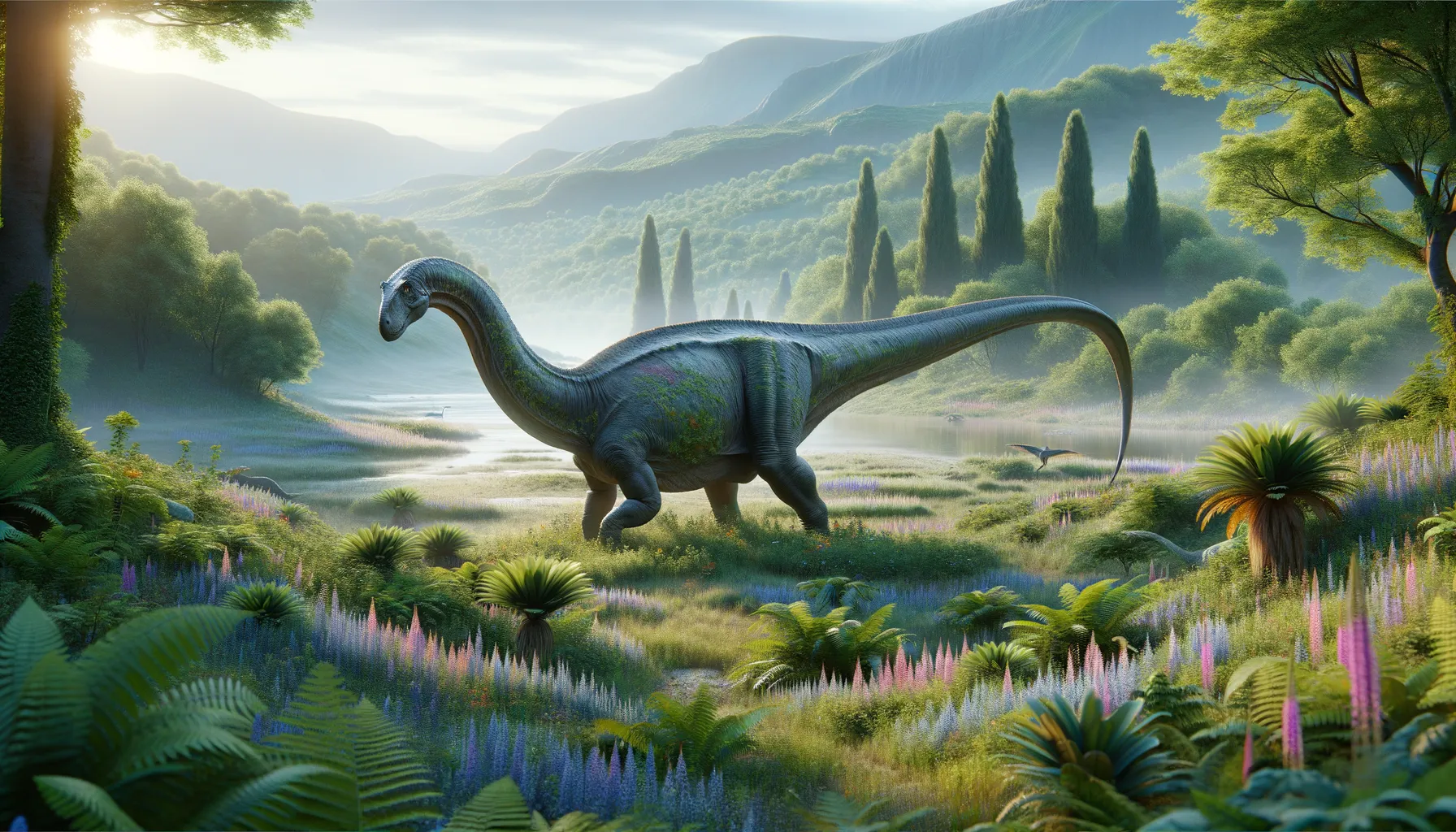
Iuticosaurus
Majestic giant from the ancient past!
Period
Cretaceous
Length
Length of approximately 30 feet.
Height
Stood about 10 feet tall.
Weight
Weighed up to 3 tons.
Iuticosaurus was a sizeable sauropod dinosaur that roamed what is today Europe during the Cretaceous period. Known for its long neck and tail, it had a robust body and was likely a herbivore. Though not the largest of its kind, Iuticosaurus captivate paleontologists due to its fascinating adaptation strategies and its remains found in England add to the puzzle of dinosaur distribution during its time.
Diet
Iuticosaurus was likely a herbivore, feeding on plants that grew at different heights. With its long neck, it could reach both high and low vegetation, making the most of its environment's resources.
Hunting
As a herbivore, Iuticosaurus didn't hunt but rather foraged. It possibly traveled in groups to search for food, relying on its size and numbers for protection.
Environmental challenges
Iuticosaurus faced challenges like changing climates and finding adequate food sources during dry spells. Its massive size required it to consume large quantities of vegetation daily, which could be difficult in sparse environments. Predators recognized it as prey, but its herd behavior and size provided a natural defense. Natural disasters like floods or droughts could also impact its habitat, forcing it to migrate.
Speed
Slow and lumbering.
Lifespan
Long-lived for a dinosaur.
First discovery
Discovered in England in the mid-20th century.
Fun Facts
- Iuticosaurus is known from very limited fossil remains, which makes it a bit of a mystery in the dinosaur world.
- It lived during the Late Cretaceous period, which was the last era of the dinosaurs before their extinction.
- The name 'Iuticosaurus' means 'Iutic lizard', named after the ancient tribe of the Iuti, who lived in what is now modern-day England.
- Iuticosaurus was a type of sauropod, the group of dinosaurs known for their large size and long necks.
- Despite its unclear history, Iuticosaurus adds a piece to the puzzle of dinosaur evolution and diversity in Europe.
- Like other sauropods, it is believed to have been herbivorous, feeding on plants and leaves.
Growth and Development
Iuticosaurus grew slowly, taking many years to reach full size, which was common among large dinosaurs. It likely hatched from eggs and had to survive its vulnerable, smaller stages. As it matured, its growth rate provided strength and stability, making adults less susceptible to threats. Parental care among sauropods isn't well known, but juveniles likely stayed in groups for protection.
Habitat
Iuticosaurus lived in what would have been lush environments with plenty of vegetation. It thrived in regions with a warm climate and a variety of plant life. Areas with rivers and plains would have been ideal, providing both water and seasonal flora. Fossil records suggest it roamed wide distances to seek suitable habitats depending on the resources available.
Interaction with other species
Iuticosaurus interacted with other dinosaur species but mainly as a massive neighbor competing for plant resources. Living in groups, it likely faced few threats from predators when fully grown. Its presence could have influenced the behaviors of other herbivores and discouraged carnivores. Fossil sites sometimes show mixed-species associations, hinting at dynamic interspecies interactions.
Natural lifespan
Its natural lifespan reached several decades.
Reproduction
Iuticosaurus likely laid clutches of eggs in nests built in mineral-rich, sandy soils. Incubation relied on the environment's warmth and could take months. Hatchlings were vulnerable and required immediate growth spurts for survival. It's possible that adults provided some protection for their young by nesting in colonies.
Social behaviour
Iuticosaurus may have exhibited herd behavior, moving in large groups for protection and cooperation in foraging. These social structures helped in rearing young and thwarting predators. Communication might have been through body language and low-frequency sounds. Solitary individuals might have been weaker, indicating the importance of group dynamics.
Fossil locations
Fossils have been primarily found in England, shedding light on sauropods in Europe. Their discovery in varied geological layers provides insight into migratory patterns. Fossilized footprints often accompany fossils, giving clues about their path and behavior. Excavations continue to reveal scattered remains, indicating a wider range than previously thought.
